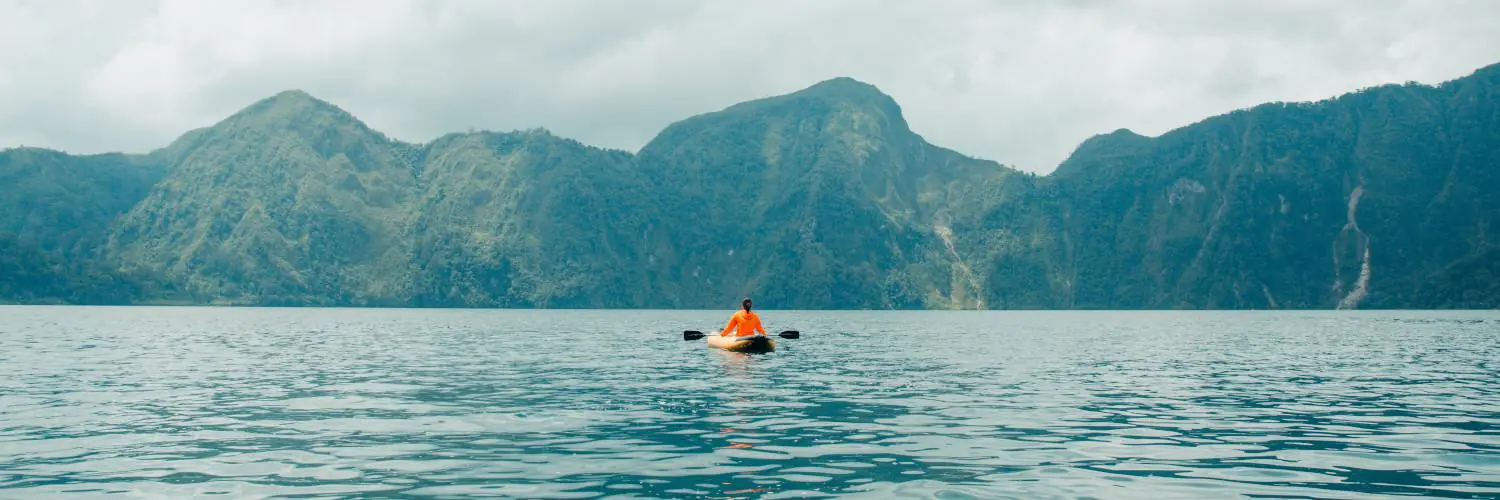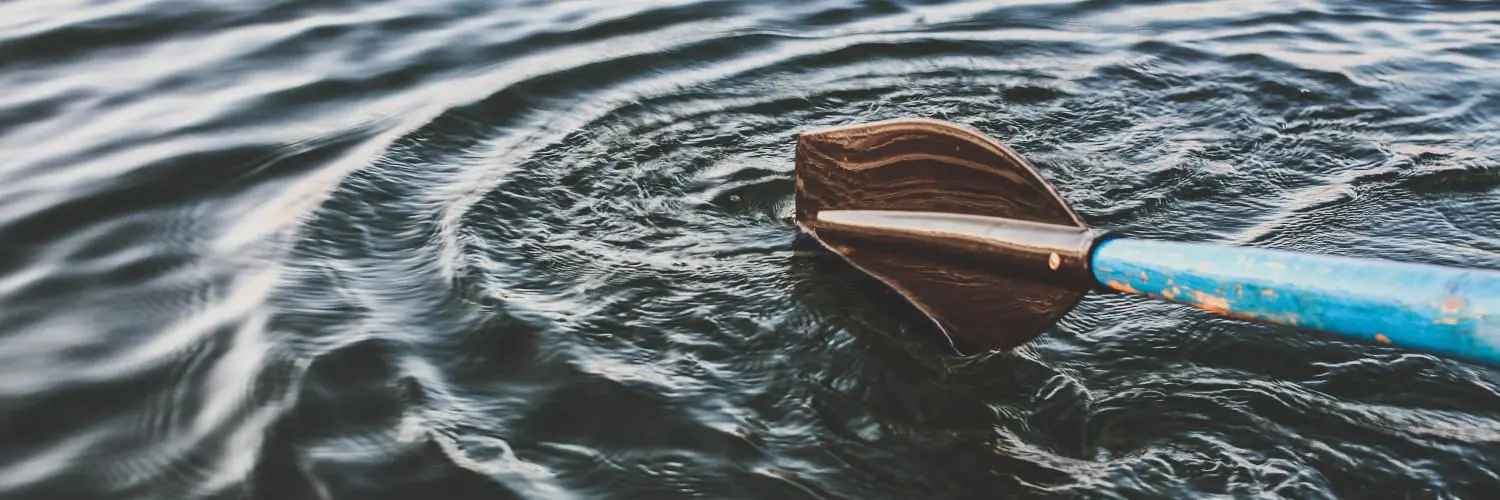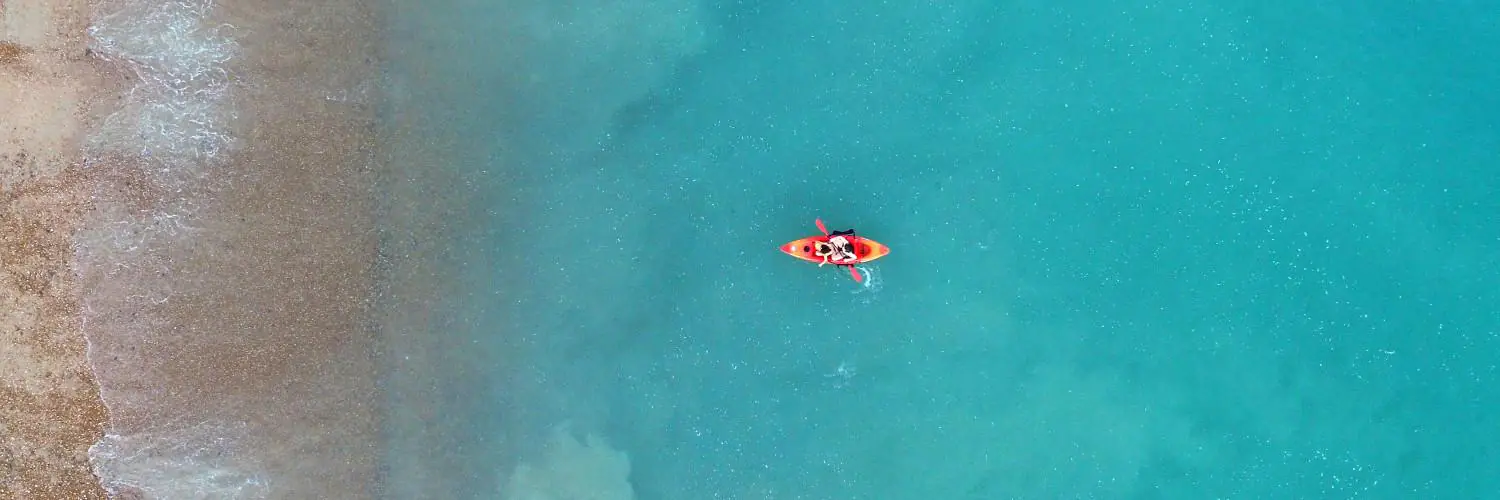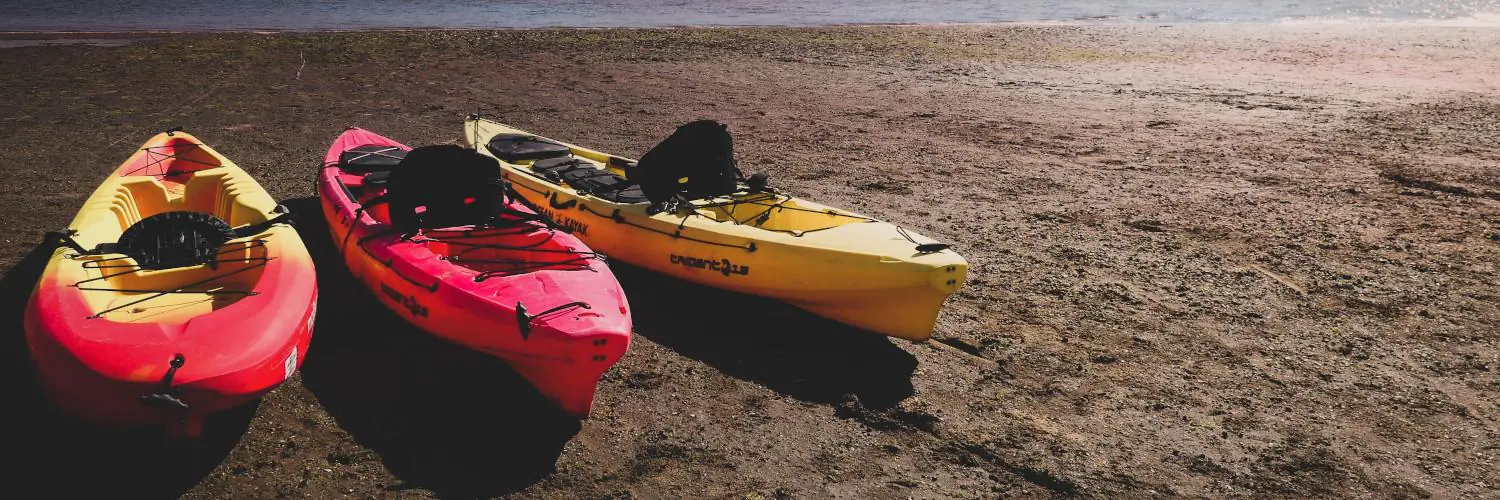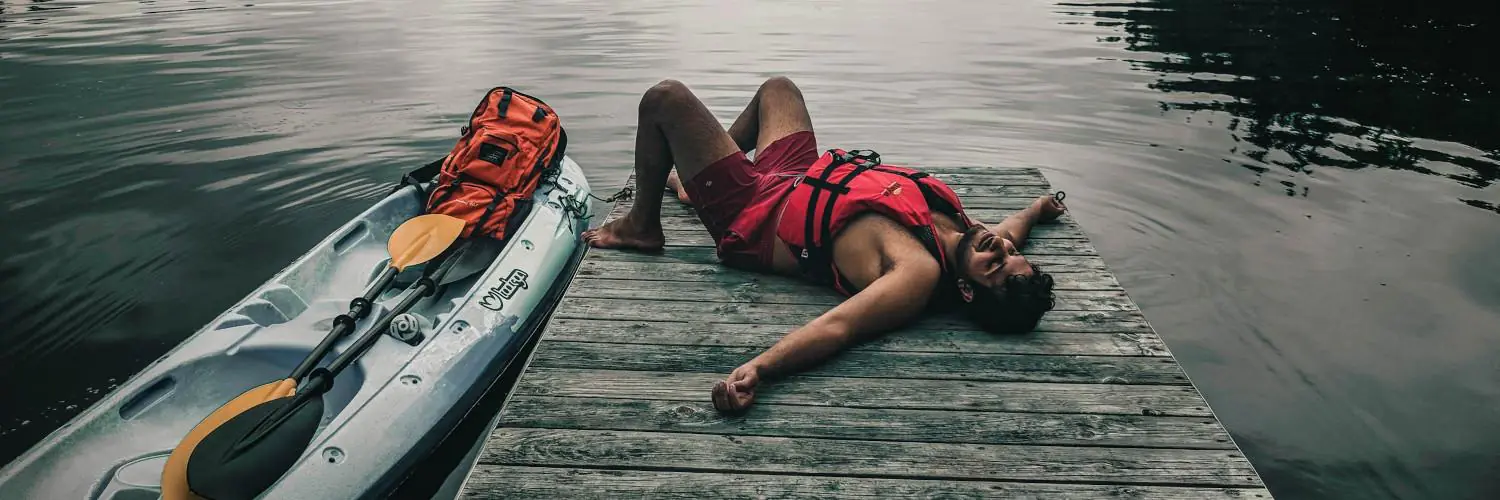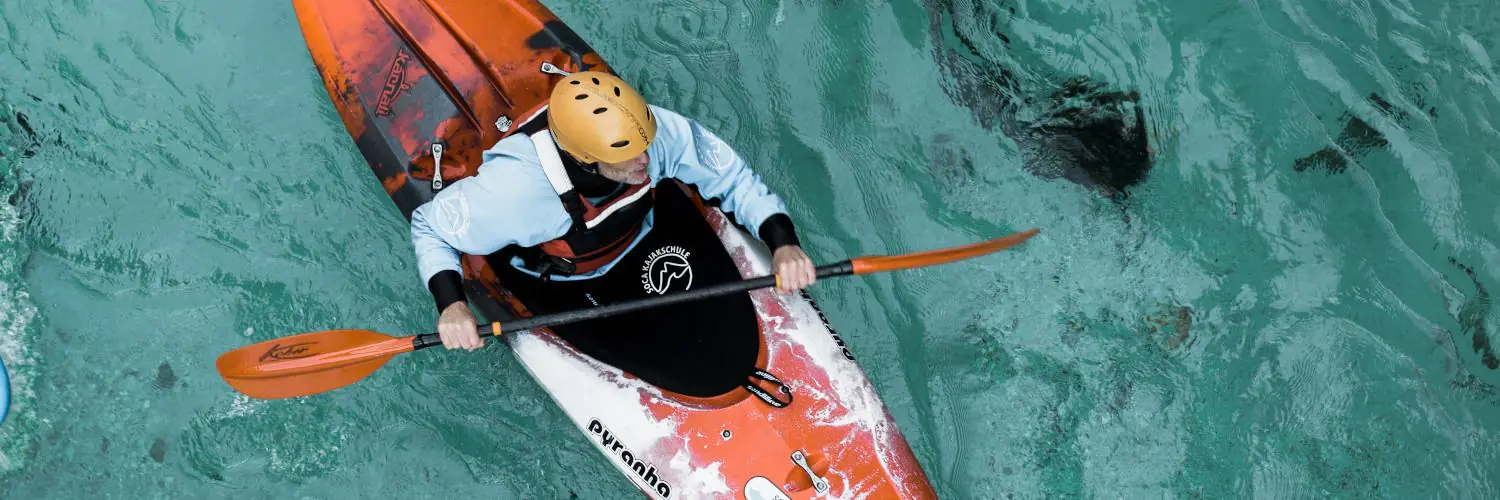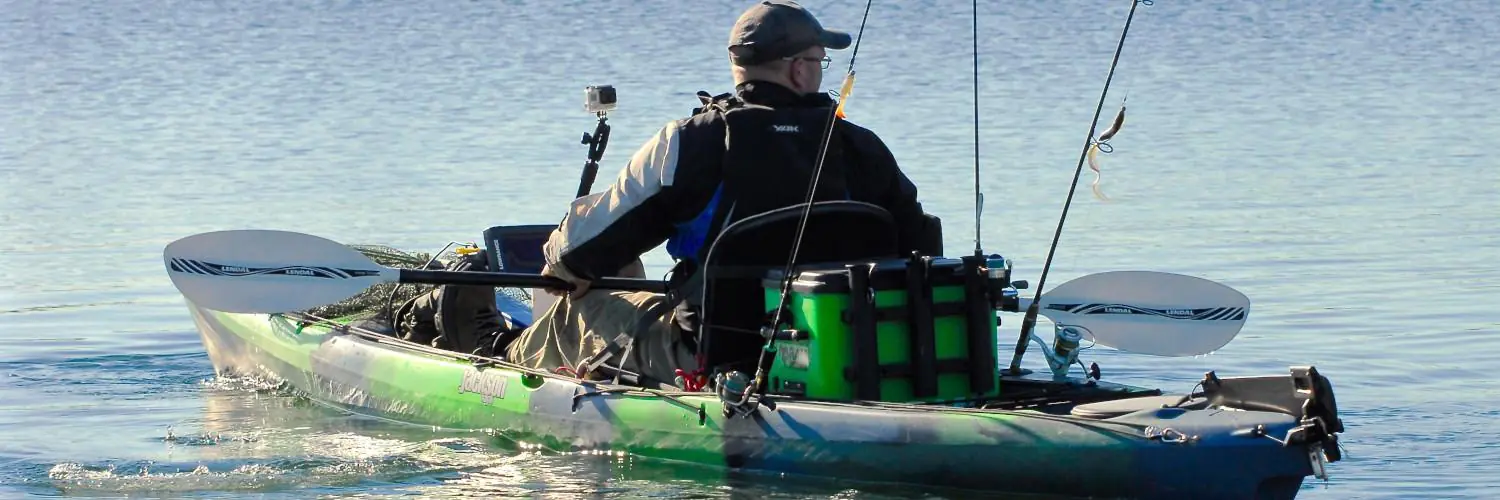Kayaks can be anchored, and using the right anchoring techniques can help paddlers stay in place while fishing, relaxing, or taking a break from paddling. Anchoring a kayak is not only possible, but also widely used by kayakers who want to maintain their position, especially in moving water or windy conditions.
Understanding the practical details of anchoring—from choosing the right anchor type and rope size to knowing where and how to attach it—ensures safety and effectiveness on the water. Readers interested in improving their kayaking experience and avoiding common anchoring mistakes will find valuable tips and methods throughout this article.
Table of Contents
Understanding Kayak Anchoring
Anchoring a kayak lets paddlers hold position for fishing, resting, or just taking in the surroundings. Key factors include choosing the right anchor type, using proper techniques, and always considering personal and situational safety.
Why Anchor a Kayak
Anchoring a kayak is most often done to maintain a steady position in moving water or wind. This is crucial for anglers who want to fish specific spots or for anyone who wants to pause in one location without constant adjustments.
A stationary kayak also allows for safer breaks, photography, or observing wildlife. It helps prevent unwanted drifting and makes activities like baiting hooks or managing gear easier. Holding position is especially beneficial when paddling rivers with current, or near the shore in lakes with wind.
Certain conditions—such as tidal flows or complex underwater structures—mean drifting can happen quickly. Using an anchor helps control the kayak’s position so users can focus on their activity, not on paddling against movement.
Basic Principles of Anchoring a Kayak
The process of anchoring a kayak starts with selecting a suitable anchor. Options include grapnel, claw, or small folding anchors, each providing varying hold depending on bottom type and kayak size. Weight of the anchor is important, as a larger kayak will need something heavier and more secure to hold it in place.
The kayak anchor line, often called a rode, should be at least 3–5 times the depth of the water to ensure a strong grip. Attaching the anchor line to a secure point on the kayak—using a cleat, strong knot, or anchor trolley system—prevents accidental loss or drifting.
Anchor trolleys are especially effective for kayaks, allowing the user to adjust the anchor point along the length of the kayak. This provides better control over orientation into the wind or current. Regular checks on the line and the attachment point are important to avoid sudden unfastening or tangles.
Safety Considerations When Anchoring
Proper safety precautions are crucial when anchoring your kayak. Boats in fast-flowing rivers or tidal areas face strong currents, which can tip or swamp the kayak if the anchor is not managed carefully. Dropping anchor in unsafe locations—such as near rocks, other boats, or heavy traffic zones—can increase risk.
Always wear a life jacket when anchoring a kayak. Avoid setting the anchor directly from the side, as this can cause the kayak to become unstable and even capsize. Attach the anchor line to a dedicated point designed to handle the load, and never wrap the line around the body.
In case the kayak gets pulled, be prepared to quickly release the anchor line or use a quick-release system. Double-check knots and fittings before deploying the anchor. Regular practice and familiarity with the process help reduce errors and improve confidence while on the water.
Types of Kayak Anchors and Systems
Kayak anchors come in several forms, each designed to match different water conditions and user needs. The choice of anchoring system can affect stability, ease of use, and how reliably a kayak stays in position.
Choosing the Right Anchor
Selecting an appropriate kayak anchor depends on the kayak type, water depth, and the bottom surface. For fishing kayaks used in shallow waters, a stakeout pole offers precise control. In deeper or moving water, a folding anchor or drag chain may be more suitable.
Weight matters. Lightweight anchors like a 1.5lb anchor work well for small kayaks but may not hold in strong current or wind. Heavy anchors such as a 3lb version or a mushroom anchor provide stronger hold but add extra bulk. The type of trip planned—whether stationary fishing or moving along a river—also dictates the right anchor choice.
Common Anchor Types for Kayaks
The folding grapnel anchor is highly favored for its compactness and versatility. Its four flukes fold out to grip various bottoms such as sand, mud, or rock. It’s easy to stow, making it practical for smaller kayaks.
A mushroom anchor relies on weight and shape to stay put. It works best in soft, muddy lakebeds. Stakeout poles, sometimes called a stake out pole, are long rods used to pin a kayak in shallow flats, providing silent and secure anchoring. Some users opt for a drag chain which drags along the bottom, slowing drift rather than anchoring completely.
For convenience, powered anchoring systems are available, but these are less common and mostly used in high-end fishing kayaks.
Pros and Cons of Different Anchoring Systems
| System | Pros | Cons |
|---|---|---|
| Folding Grapnel Anchor | Compact, versatile, grips many surfaces | May not hold in strong current |
| Mushroom Anchor | Simple, good for mud or soft bottoms | Heavy, less effective on hard surfaces |
| Stakeout Pole | Easy, quick deployment for shallow water | Useless in deep water |
| Drag Chain | Slows drift quietly, adjustable drag | Not a true anchor, can snag debris |
| Powered Systems | Hands-free, quick deployment | Expensive, requires installation |
Each anchoring system presents trade-offs in portability, deployment time, and effectiveness depending on the environment. Consider the kayak’s size and typical fishing locations for the best results.
How to Anchor a Kayak: Step-by-Step
Anchoring a kayak involves careful preparation, choosing the right components, and following safe procedures to ensure security on the water. Each stage—from setting up equipment to handling the anchor—affects stability, safety, and ease of use.
Preparing Your Kayak and Equipment
Selecting the proper kayak anchor line is essential. Most paddlers choose a line that is 2–7 times the depth of the water, balancing between enough length for holding power and practicality. A durable rope like a polyester clothesline, often at least 3/16 inches thick, is recommended for its strength and resistance to water damage.
Attaching the anchor line securely to the kayak reduces the risk of drifting. Many use a carabiner or a cleat hitch knot for a reliable connection. Some kayaks have dedicated anchor trolley systems, letting users control where the anchor line runs along the hull.
A foam float on the end of the line can keep the anchor visible and retrievable if the line is released. This step is optional but adds an extra layer of convenience and safety during anchoring.
Deploying the Anchor Safely
To anchor a kayak, approach your chosen spot into the wind or current. This orientation prevents the kayak from swinging unexpectedly after the anchor is set. Lower the anchor slowly by hand; never throw it to avoid tangling the anchor line or damaging gear.
Feed the anchor line out steadily, allowing for at least double the water’s depth. For example, in 10 feet of water, let out 20 feet or more of line for a secure hold. Once enough line is out, gently pull back to set the kayak anchor and ensure it grips the bottom.
Always double-check that the anchor line is firmly attached to the kayak before letting go. Make sure the area is safe, with no obstacles or boat traffic, to minimize hazards while anchoring your kayak.
Retrieving and Storing the Anchor
To retrieve the anchor, paddle or position the kayak above where the line entered the water. Pull the kayak anchor line in steadily while keeping the kayak as stable as possible. Avoid sudden movements or jerks, which can destabilize smaller kayaks.
If resistance is high, try gentle angles or short bursts of pulling to release the anchor. When freed, bring the anchor on board carefully, ensuring excess line does not tangle or trip any gear. Store the anchor and line in a dry section of the kayak, using a storage bag or compartment if available.
Regularly check all anchor hardware and lines for signs of damage, fraying, or corrosion. This practice prevents failure during future use and maintains safe, efficient anchoring of your kayak.
Using Anchor Trolley Systems and Accessories
An anchor trolley system provides flexibility in positioning a kayak when anchoring. By allowing the anchor point to move along the length of the kayak, these systems improve control and safety, especially in changing wind or current conditions.
Anchor Trolley System Functionality
A kayak anchor trolley is a set of pulleys, ropes, and attachment points installed along one side of the kayak. This system makes it possible to slide a connection ring or carabiner from the bow to the stern.
The main goal is to move the anchoring point easily, giving paddlers precise control over their orientation. Fishermen often use this to face into the wind or current while staying anchored. Unlike fixed anchor points, the trolley allows for repositioning without needing to paddle or reset the anchor.
Key Components:
- Pulley or pad-eye mounted at bow and stern
- A strong, low-stretch cord
- Carabiner or stainless-steel ring for anchor line
- Locking cleat to hold the line in place
This arrangement increases safety by letting users quickly adjust or release the anchor if water or wind conditions change.
Installing a Kayak Anchor Trolley
Installing an anchor trolley system requires securing hardware along one side of the kayak. Most kits come with mounting instructions, but setup usually involves attaching pulleys or pad-eyes at the bow and stern.
The cord is threaded through these pulleys, running the length of the kayak. It must be taut but not overly tight, letting the ring or carabiner slide smoothly. Users should check for any interference with paddling or gear.
Installation Tips:
- Use marine-grade stainless steel hardware to resist rust
- Apply silicone or marine sealant around screws to prevent leaks
- Test movement of the trolley before heading onto the water
Correct installation ensures reliable operation and prevents line tangling or snagging.
Adjusting Anchor Position: Bow or Stern
With the system installed, the anchor point can be moved anywhere from the bow to the stern. This flexibility matters most in different water or wind conditions.
Positioning the anchor at the bow helps the kayak face into wind or current, reducing drift. Moving it to the stern reverses the orientation, which can be useful for fishing with the wind at your back or positioning baits downstream.
How to Adjust:
- Drop the anchor and run its line through the trolley ring.
- Use the trolley line to move the ring toward the bow or stern.
- Secure the line with the cleat once the desired position is reached.
This method allows for kayak repositioning without disturbing the anchor itself, increasing control and comfort during use.
Best Practices for Kayak Anglers
Proper anchoring improves kayak fishing by keeping the kayak stable, allowing more precise casts, and maximizing time spent in productive fishing spots. Equipment care and adapting techniques to changing water conditions are essential for safe, efficient anchoring.
Anchoring for Kayak Fishing
When anchoring a kayak for fishing, it’s important to choose an anchor size and type that fits both the kayak’s weight and the typical water conditions. Lightweight grapnel or mushroom anchors are commonly used since they hold well on various bottoms and aren’t too heavy for efficient handling.
Kayak anglers should attach the anchor line to a point along the kayak’s side using an anchor trolley or similar system. This allows adjustments to the angle of the kayak relative to the wind or current. Avoid tying the anchor line directly to the bow or stern in moving water, as this increases the risk of capsizing.
Ensuring a secure knot or cleat hitch at the kayak connection point is crucial. Before dropping the anchor, double-check the attachment and line length to prevent accidental slippage or drift. Deploy the anchor slowly to minimize sudden jerks on the kayak.
Adapting to Water Conditions
Water conditions can change rapidly, affecting the effectiveness and safety of anchoring. Anglers should consider the strength and direction of the current, water depth, and bottom type before deploying the anchor.
For strong currents or choppy water, a heavier anchor may be necessary to prevent drifting. In muddy or sandy environments, a mushroom anchor tends to hold better, while rocky bottoms benefit from grapnel-style anchors that can hook onto crevices.
If the wind shifts or tides change, be prepared to reposition the anchor. The use of an anchor trolley allows for quick reorientation without the need to physically move the anchor. Always monitor surroundings and avoid anchoring in channels or where boat traffic is high.
Maintaining Your Anchoring Equipment
Regular inspection of anchoring gear is necessary to ensure reliability and safety throughout the fishing season. Look for frayed or weakened anchor lines, rust on metal components, and any bends or cracks in the anchor itself.
Storing the anchor and line in a ventilated, dry compartment reduces corrosion and mildew. Rinse equipment with fresh water after exposure to saltwater to prevent premature wear.
Periodically practice deploying and retrieving the anchor, especially with any new equipment. Familiarity with the system allows for faster, safer anchors drops and retrievals, minimizing distractions when focused on fishing. Ensure all gear is stowed securely to prevent tangles or accidental loss overboard.

